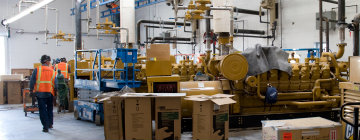Landfill doubling renewable energy output for Seattle
Facility to generate enough electricity for 12,000 homes
Seattle, Wash. – Earlier this month, Waste Management announced it would soon be doubling the renewable energy capacity at its Columbia Ridge Landfill, located in northern Oregon and an electrical provider for Seattle City Light. Currently, the site has the capacity to generate 6.4 megawatts (MW) of electricity.
However, following a plant expansion, which is expected to be ready for commercial operation in August, the new capacity will be 12.8 MW — enough to power approximately 12,000 homes. It’s another classic example of a sustainable closed loop, where:
- Seattle produces waste that’s disposed of at WM’s Columbia Ridge Landfill
- Through landfill-gas-to-energy, waste is used to produce electricity
- That energy is then used to help meet Seattle’s electrical needs
The process Waste Management uses to produce electricity works by collecting gas from the landfill, which is created naturally during the decomposition of waste. From there, the gas is sent through a series of machines, where it’s filtered and compressed. Following that, the gas goes to generators, which use it as a fuel to produce electricity. In total, Waste Management landfills use this landfill-gas-to-energy process to create enough electricity for more than 400,000 homes.
“Adding the increased generation from Columbia Ridge to our energy portfolio helps us meet our customers’ electricity needs, continue our status as a carbon-neutral utility and meet the new renewable energy goals,” City Light General Manager and CEO Jorge Carrasco said. “Opportunities like this are how we limit our environmental impact while delivering reliable electricity to our customer owners at some of the lowest prices in the country.”
